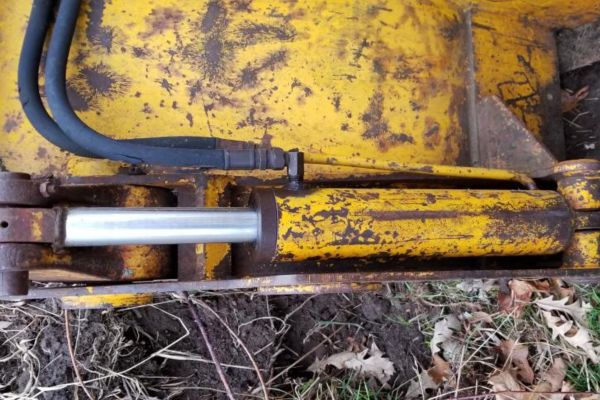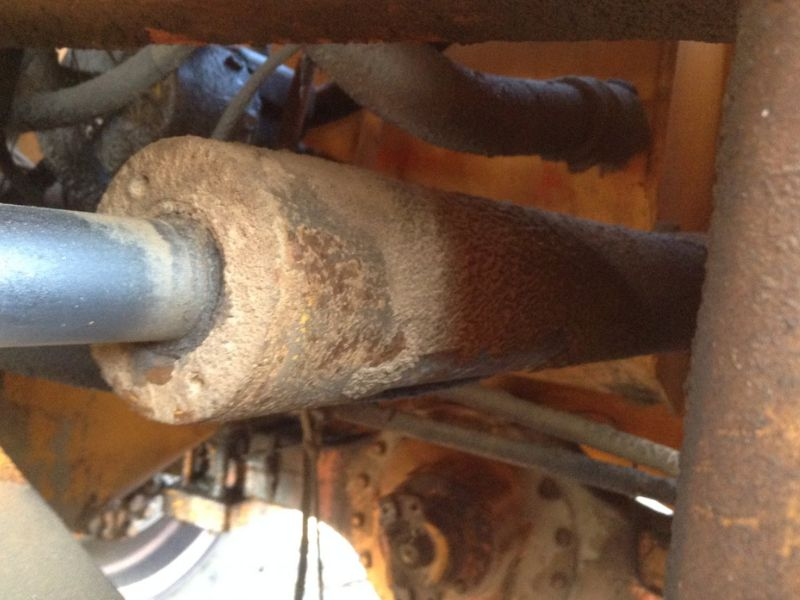This article tackles the perplexing issue of hydraulic cylinders failing to lower despite their robustness. It delves into diverse causes, spanning fluid dynamics to mechanical degradation, examining why these sturdy components may malfunction.
Our aim is to equip you with diagnostic insights and remedies, ensuring your hydraulic systems operate seamlessly and at peak efficiency.

Hydraulic fluids serve dual purposes: lubricating moving parts to reduce friction and acting as a coolant to dissipate operational heat. However, contamination from sources like dust, water, or foreign materials can lead to wear, corrosion, and system damage. Leakage, another common issue, reduces oil levels, impairing system efficiency and cylinder functionality. Both leaks and inadequate maintenance, resulting in low fluid levels, hinder cylinder force generation for proper lowering. The hydraulic system's efficacy and reliability hinge on clean, uncontaminated fluid at sufficient levels, crucial for optimal performance, extended component lifespan, and seamless operations.
Symptoms
1.Slow cylinder actions may signal low fluid levels or contamination hindering flow.
2.Erratic movements can stem from air or impurities in the fluid, leading to cavitation.
3.Total failure to move typically indicates severe fluid loss or blockages from heavy contamination.
Solutions
1.Monitor fluid levels regularly: Keep hydraulic fluid within the recommended fluid level range to avoid performance degradation due to underfill or pressure issues, as well as potential leaks due to overfill.
2.Change fluid immediately upon detection of contamination: Promptly handle contaminated fluid caused by water, debris or foreign matter to avoid system damage. Implement advanced filtration or advanced seals to reduce the ingress of contaminants.
3.Regular leak inspection and remediation: Systematically check for leaks that could reduce fluid levels and allow contaminants to enter. Prompt detection and repair maintains system effectiveness and integrity.\
Hydraulic cylinders comprise vital parts: seals, pistons, rods, and their housing. Wear or damage to any component can cause mechanical failure, hindering cylinder retraction. Seal deterioration permits leaks, while pistons and rods may misalign or sustain injury from stress or incidents. These issues not only obstruct cylinder function but also risk broader system collapse if unresolved promptly.
Initial inspection and diagnosis
1.Scheduled Maintenance Protocol: Establishing a systematic maintenance calendar is crucial.
2.Routine Maintenance Schedule: This proactive maintenance prolongs system life, sustains optimal efficiency, and minimizes unscheduled stops.
3.Emphasize Seal and Bearing Care: As seals and bearings are pivotal to system integrity and smooth operation, they often initially indicate wear. Giving them special attention during checks facilitates early issue detection. Frequent lubrication, correct fitting, and utilization of premium spare parts ward off early deterioration and failures.

Valve issues significantly impair hydraulic cylinder performance, disrupting operations by affecting fluid flow and pressure control, which are essential for smooth and accurate actuation. Insufficient force for cylinder lowering, operational delays, and systemic failures can arise when valves malfunction due to contamination, wear, incorrect installation, or inherent mechanical faults.
Resolution
1.Ensuring Clean Hydraulic Fluid: Cleanliness of the hydraulic fluid is paramount. Contaminated fluid can lead to valve malfunctions by clogging or corroding the valve mechanisms.
2.Proper Installation and Functioning: Ensuring that valves are installed correctly is crucial to their operation. Incorrect installation can lead to leaks, blockages, and ultimately, valve failure.
3.Professional Expertise: While some preventive measures can be undertaken by the system operators, diagnosing and resolving complex valve problems often require professional expertise.

Adjustments
1.Optimize Fluid Selection: Choosing the right hydraulic fluid, tailored to the operating temperature range, enhances efficiency. A fluid's viscosity must match the conditions to ensure peak performance. Adjusting to a fluid better suited to current temperatures boosts system output.
2.Add Heaters/Coolers as Necessary: Integrating heaters and coolers as needed maintains the hydraulic fluid at its ideal viscosity for seamless functioning. Heaters counteract fluid thickening in cold climates, preventing sluggish actions, while coolers in warm settings avert fluid over-thinning and ineffectiveness.
Precautions
1.Implement Protective Measures: Shielding hydraulic systems from extreme environmental conditions can prevent many issues. This could involve installing protective covers to guard against dust, debris, and moisture or situating the machinery in a way that minimizes exposure to harmful elements.
2.Regular Environmental Assessments: Conducting regular checks of the operating environment can help identify potential risks to hydraulic systems. This proactive approach allows for timely adjustments or the implementation of protective measures before any damage occurs.
Understanding
The efficacy of hydraulic systems relies on sustaining precise pressure levels, customized to the machinery's operational demands. Understanding these specifications is vital for troubleshooting, pinpointing pressure discrepancies that could impede function – low pressure reducing load capacity and excessive pressure causing leaks or component damage.
Troubleshooting
Regular pressure setting inspections are integral to hydraulic system upkeep. These assessments verify operational pressures against design specifications, uncovering issues like leaks, obstructions, or pump inefficiencies. Adjustments to meet system demands can rectify various problems, involving steps such as:
1.Assessing pump efficiency for direct pressure impact.
2.Scanning for leaks, as minor leaks significantly affect pressure.
3.Confirming valve integrity to prevent pressure fluctuations.
4.Aligning load requirements with design specs to avert pressure anomalies.
We've covered various factors contributing to hydraulic cylinder descent failure, including fluid issues, mechanical breakdowns, valve malfunctions, external influences, and pressure irregularities. Though challenging, these problems are addressable with the proper expertise. Nevertheless, unforeseen complications may arise where professional assistance becomes indispensable. For any hydraulic cylinder inquiries, feel free to reach out to Topa; we're committed to providing prompt responses.